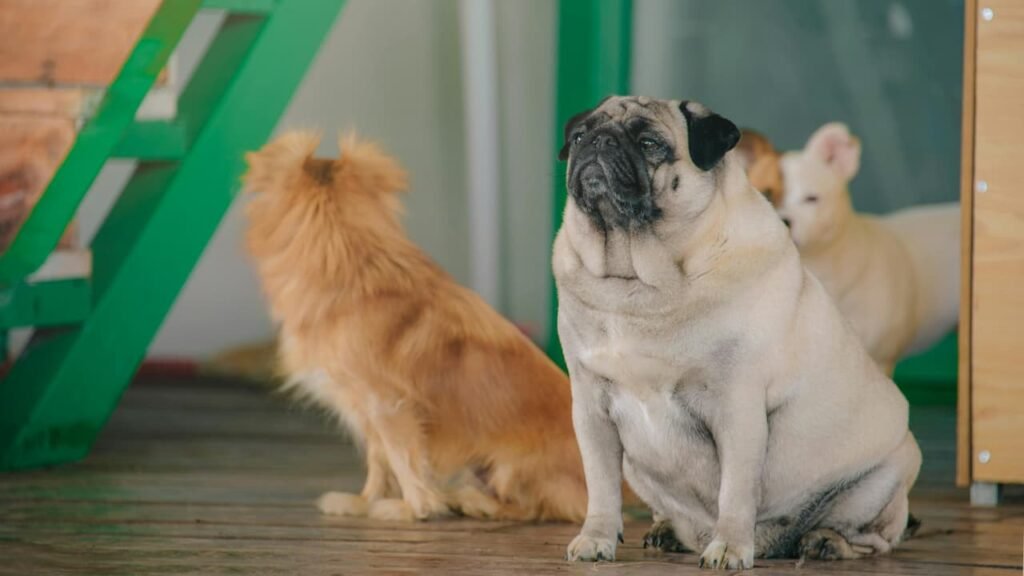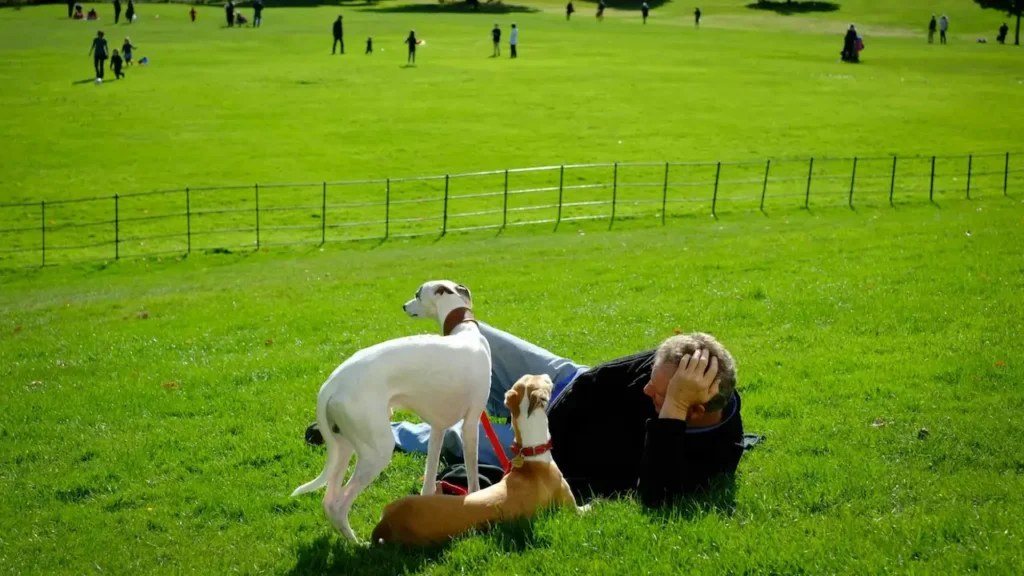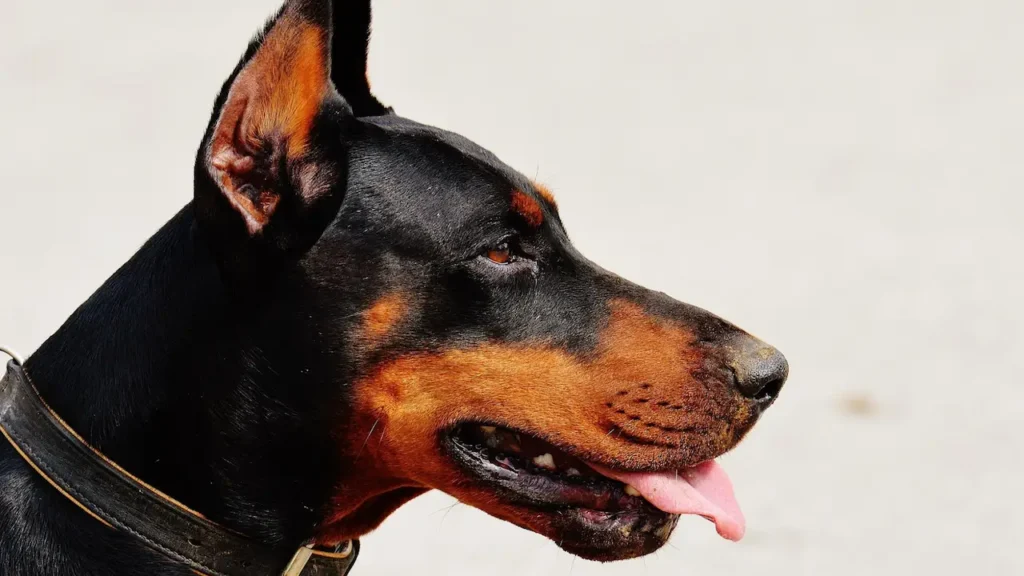From scorching summer heat to icy winter winds, each season brings unique hazards that pet owners should be aware of. Here’s a comprehensive guide to seasonal safety tips for dogs, ensuring your four-legged companion stays happy and healthy all year round.
Spring
Spring is a magical time of year. The days grow longer, flowers bloom, and the air feels fresher. For many dogs, this season brings excitement as they spend more time outdoors exploring the world. However, spring also introduces unique dangers that pet owners need to be aware of to ensure their furry companions stay safe and healthy.
Seasonal Allergies in Dogs
Dogs can suffer from seasonal allergies triggered by pollen, mold spores, grasses, and other environmental factors. These allergens are particularly prevalent during spring when plants begin releasing pollen into the air. Common symptoms of allergies in dogs include persistent scratching at certain areas, especially paws, ears, and belly. Inflamed skin, rashes, and hot spots caused by excessive scratching.
Dog experience sneezing and runny eyes during spring. Allergies can lead to ear discomfort and infections due to increased moisture in the ear canal.
Fleas, Ticks, and Mosquitoes
As temperatures rise, so does the population of pesky parasites like fleas, ticks, and mosquitoes. These critters not only cause irritation but can also transmit diseases that threaten your dog’s health.
Fleas bite and feed on your dog’s blood. This causes intense itching and potentially leading to flea allergy dermatitis (FAD). Flea infestations can spread throughout your home.
Ticks carry harmful pathogens. It can cause Lyme disease, ehrlichiosis, and Rocky Mountain spotted fever. Always check your dog thoroughly after outdoor adventures. Pay close attention to hidden areas like under the collar, between toes, and inside the ears.
Mosquito bites are annoying. They’re also responsible for transmitting heartworm larvae to dogs. Heartworm disease is serious and potentially fatal.
To protect your dog, use vet-recommended preventive products that repel and kill these pests. Regular grooming sessions allow you to spot and remove ticks before they attach firmly. Additionally, keep your yard trimmed and free of standing water, which serves as a breeding ground for mosquitoes.
Poisonous Plants and Chemicals
Springtime gardening and landscaping efforts involve planting beautiful flowers and applying fertilizers to lawns. Unfortunately, many of these elements pose significant risks to curious dogs.
Some popular spring blooms, such as lilies, daffodils, azaleas, tulips, and hyacinths, are toxic to dogs. Even small amounts ingested can result in vomiting, diarrhea, drooling.
Lawn fertilizers, herbicides, and insecticides can irritate your dog’s skin or digestive system. Opt for pet-safe alternatives. Fence off treated areas until chemicals have dried completely.
Supervise your dog closely during walks to prevent them from nibbling on unfamiliar vegetation. If you suspect your dog has come into contact with something toxic, seek immediate veterinary care.
Increased Exercise and Activity Levels
With extended daylight hours, it’s natural to want to take your dog outside more frequently. Exercising the dog is common. However, sudden increases in exercise duration can strain your dog’s muscles and joints.
Ease your dog into higher activity levels by gradually increasing the length and intensity of workouts. Start with short walks and build up over several weeks.
Senior dogs require extra caution. Tailor activities to their abilities and provide ample rest periods.
Ensure your dog stays hydrated and receives adequate nutrition to support their energy needs. Bring water along on outings and offer breaks to cool down.
Summer
Summer presents challenges related to heat and humidity. Keeping your dog cool and comfortable is essential to preventing heat-related illnesses.
Heatstroke Prevention
Dogs regulate their body temperature primarily through panting. This mechanism becomes less effective in extreme heat. Heatstroke is a life-threatening condition that requires immediate attention.
Never leave your dog in a parked car. The interior of a car can reach lethal temperatures within minutes. When spending time outdoors, ensure your dog has access to shade and plenty of fresh water. Portable bowls and collapsible water bottles are convenient options for travel.
Avoid exercising your dog during peak heat hours. Opt for early morning or evening walks instead.
Signs of heatstroke include excessive panting, drooling, weakness, vomiting, and collapse. If you suspect heatstroke, move your dog to a cool area, apply wet towels to their body, and seek emergency veterinary care.
Paw Pad Protection
Hot asphalt and concrete can burn your dog’s sensitive paw pads. This leads to pain and injury. Before heading out, test the surface with your hand. If it’s uncomfortable for you, it’s too hot for your dog.
Consider Booties. Protective footwear shields your dog’s paws from burns and sharp objects. Apply paw balm to prevent cracking and maintain pad health.
Water Safety
Swimming is an excellent way for dogs to beat the heat, but not all breeds are strong swimmers. Supervision is key, regardless of your dog’s swimming ability.
Invest in a properly fitted canine life jacket for added buoyancy and peace of mind. If your dog is new to swimming, introduce them slowly to the water and encourage confidence.
Fall
Autumn is a season of stunning foliage. While it’s a beautiful time of year, fall also brings unique challenges for dog owners.

Antifreeze Poisoning
Antifreeze is a common automotive fluid used to prevent engine freezing in colder weather. Unfortunately, antifreeze contains ethylene glycol, which is highly toxic to dogs. This sweet-tasting liquid can be tempting for curious pets.
Early signs of antifreeze poisoning include vomiting, excessive thirst, and uncoordinated movements. If left untreated, kidney failure and death can occur within days.
For protection, clean up any spills immediately, no matter how small. Store antifreeze containers securely out of reach. Be vigilant about puddles in driveways, parking lots, and garages where antifreeze might accumulate.
If you suspect your dog has ingested antifreeze, seek emergency veterinary care right away. Time is critical when treating antifreeze poisoning.
Mushrooms and Other Fall Fungi
Fall’s damp conditions create the perfect environment for wild mushrooms to grow. Some mushrooms are harmless, others highly toxic to dogs. The challenge lies in identifying which mushrooms are safe.
Common symptoms of mushroom toxicity include vomiting, diarrhea, drooling, lethargy, seizures, and liver damage.
Keep your dog away from wooded areas, forest floors, and piles of decaying leaves where mushrooms thrive. Supervise them closely during walks and discourage sniffing or eating anything unfamiliar. Learn to recognize local toxic mushrooms and remove them from your yard if they appear.
Halloween Hazards
Halloween is a festive time filled with costumes, candy, and spooky decorations. It can also pose risks to your furry friend.
Chocolate contains theobromine and caffeine, both of which are toxic to dogs. Dark chocolate and baking chocolate are particularly dangerous. Additionally, candy wrappers can cause intestinal blockages if swallowed.
Found in sugar-free gum, candies, and baked goods, xylitol is extremely toxic to dogs. Eating xylitol can lead to hypoglycemia, seizures, and liver failure.
Excited children ringing doorbells and wearing masks can frighten some dogs. Keep your dog in a quiet room away from the commotion if needed.
Keep all treats securely stored and remind guests not to feed your dog human snacks. Monitor your dog closely during Halloween festivities to avoid accidents.
Winter
From freezing temperatures to icy terrain, this season requires careful planning and preparation.
Cold Exposure
Not all dogs are equipped to handle cold weather. Breeds with short hair, puppies, senior dogs, and those with medical conditions are particularly vulnerable to hypothermia and frostbite.
Signs of hypothermia include shivering, weakness, lethargy, slow breathing, and pale gums indicate dangerously low body temperature. Signs of frostbite include gray skin, pain, swelling, and blisters on ears, tail, and paws.
To prevent these symptoms, invest in a well-fitted dog coat. Use waterproof booties to protect their paws from snow, ice, and salt. Limit outdoor time during extreme cold and monitor your dog closely for signs of distress.
Dry your dog thoroughly after coming inside to prevent chills. Check their paws for cracks or ice buildup.
Rock Salt and De-Icers
Rock salt and chemical de-icers commonly used to melt ice. They can irritate your dog’s sensitive paw pads and pose health risks if ingested through licking.
So wipe your dog’s paws with a damp cloth after walks to remove salt and chemicals. Consider applying paw balm to moisturize and protect their pads.
Use pet-friendly de-icing products around your home to minimize risks. Waterproof booties shield your dog’s paws from salt and provide warmth and traction on slippery surfaces.
Indoor Comfort
While outdoor safety is crucial, don’t overlook your dog’s comfort indoors during winter. Drafty spaces and cold floors can make your dog feel chilly.
Provide your dog a cozy bed with soft blankets in a draft-free area. Elevate the bed slightly off the floor to reduce heat loss.
Place your dog’s sleeping area away from doors, windows, and vents where cold air might seep in. Winter air can be dry, leading to irritated skin and respiratory issues. Use a humidifier to maintain optimal indoor humidity levels.
Supervise Around Ice
Frozen ponds, lakes, and rivers may look inviting to adventurous dogs. Be careful of thin ice. It poses a drowning risk. Always keep your dog on a leash near frozen bodies of water.
If your dog falls through the ice, call for professional help, if possible. Carry a long pole or rope to extend assistance if necessary.
Teach your dog commands like “stay” and “come” to reinforce obedience and prevent them from venturing onto unsafe surfaces.
Holiday Precautions
Winter holiday season brings joy and potential hazards for dogs. Decorations, food, and guests can create stressful situations.
Pine needles, tinsel, ornaments, and tree water can harm your dog if chewed or ingested. Rich foods like turkey bones, gravy, fatty trimmings, and alcohol can upset your dog’s stomach. Keep leftovers and trash bins secured. Inform visitors about your dog’s boundaries and supervise interactions to prevent accidental injuries or escapes.
By staying informed and proactive, you can help your dog navigate the changing seasons safely and comfortably. Be prepared to adapt to whatever Mother Nature throws your way. With these seasonal safety tips in mind, you’ll create countless joyful memories with your loyal companion throughout the year!




